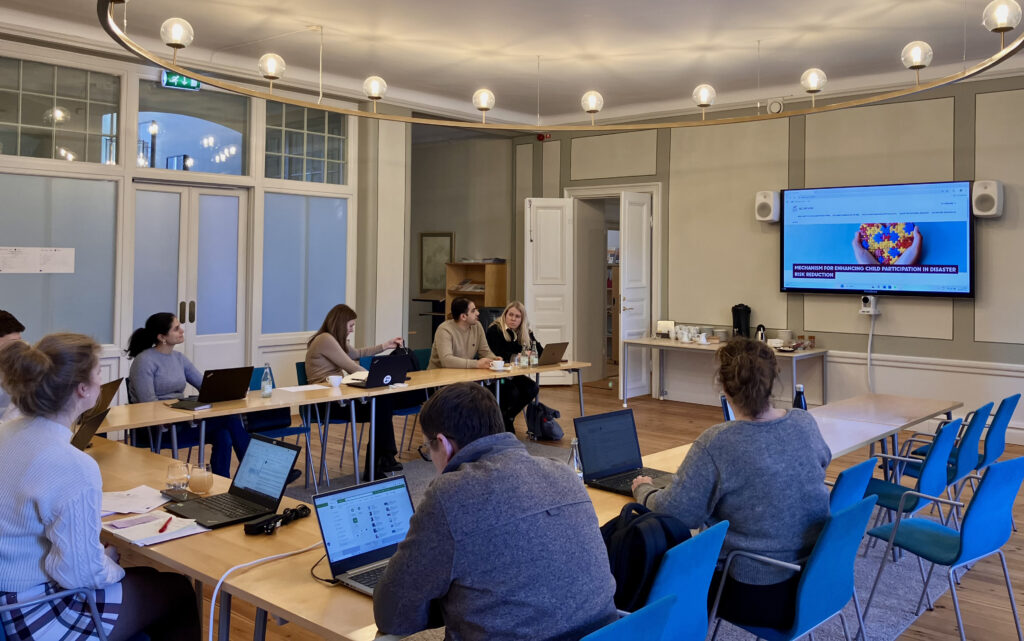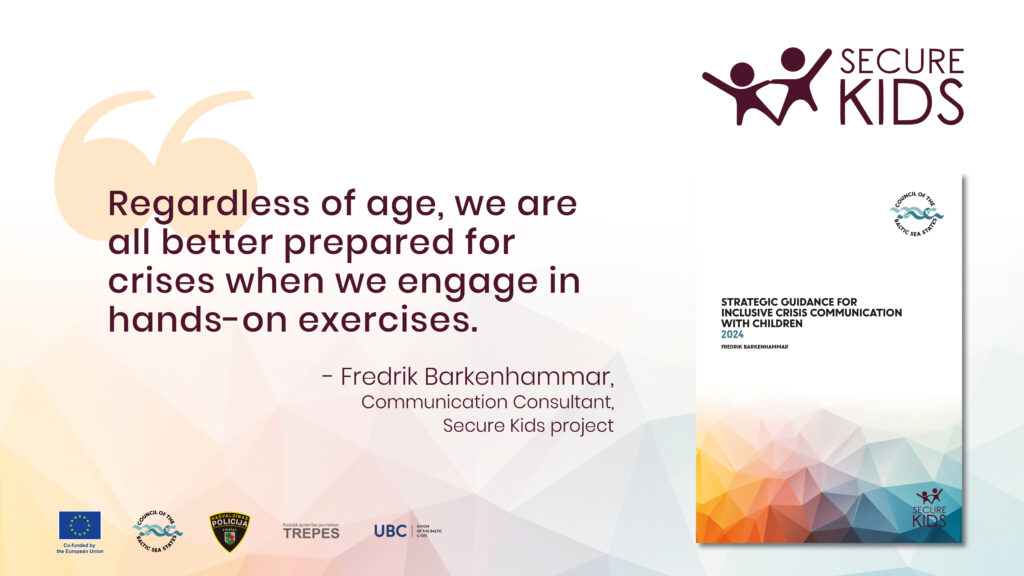Secure Kids: Advancing Child Participation in Disaster Risk Reduction
The two-year Secure Kids project, led by the Council of the Baltic Sea States, has successfully concluded, marking a significant milestone in fostering child participation in disaster risk reduction (DRR) activities.

On 17-18 February 2025, the Secure Kids project consortium convened in Stockholm to finalise their two-year collaboration. The aim of this partner meeting was to conclude the project’s transnational efforts and results in strengthening the sustainability and impact of child participation mechanisms in DRR activities and decision-making processes for building resilient societies.
Throughout its duration, the Secure Kids initiative actively engaged national experts in DRR and child safeguarding and participation, as well as children and youth from Denmark, Estonia, Finland, Latvia, Lithuania, Poland, and Sweden who have worked together on furthering the meaningful involvement of children in DRR activities.
Strengthening Child Participation in DRR
With limited prior practices on child participation in DRR across the Baltic Sea Region, the project sought to bridge this gap by gathering insights from children, youth and professionals in various countries. Through several rounds of co-creation and feedback, results were created to inspire others to start involving children or take initial steps further.
The project undertook comprehensive activities, including mapping the current state of child involvement in DRR, creating inclusive participatory and communication tools, hosting informative webinars, conducting training workshops, compiling a registry of good practices, and organising an awareness raising campaign and an international conference. Through these activities, the Secure Kids project aimed to drive systematic change and test new ways of engaging with children as partners.

The Secure Kids Platform: A Toolbox for Practitioners
One of the project’s key outcomes is the Secure Kids website, a repository of resources designed to equip authorities and organisations with the tools to effectively involve children in DRR. Recognising that no universal approach exists, the platform provides a diverse array of materials, including guidance for crisis communication with children, strategies for involving children in DRR, best practices, and interactive games:
- Guidance for Inclusive Crisis Communication with Children: Effective crisis communication with children demands more than theoretical knowledge, it necessitates hands-on engagement and accessible messaging. To address this, the project developed the guiadance incorporating practical strategies and regional best practices. To further enhance learning and engagement, two interactive games were created, providing a dynamic way for children to understand crisis preparedness.
- Guide for Including Children in DRR: This resource encourages co-creation, ensuring that children not only contribute ideas but also influence how they engage in DRR initiatives. Meaningful participation is achieved when children have a voice at every stage of the process.
- Good Practices in Child Participation: The project has gathered a set of best practices to enhance child participation in crisis preparedness, communication, and decision-making. These practices serve as a blueprint for integrating children’s perspectives into DRR planning and response efforts.
The website is designed to serve as a foundation for practitioners looking to enhance child participation in DRR efforts. By implementing these strategies, communities can create safer, more inclusive environments where children’s voices are heard and valued.
The Secure Kids project underscores that child participation in DRR must be an ongoing process, strengthening resilience and preparedness rather than a one-time initiative. Knowledge exchange, good practices and collaboration across the countries and sectors have been key to achieving sustainable outcomes, and children’s contributions the work and consequently results have been integral to shaping the project’s success.
Funded by the European Union, Secure Kids project has laid a strong foundation for future initiatives that prioritise children’s voices in disaster preparedness.
- The official Secure Kids website can be accessed here: https://cbss.org/securekids/